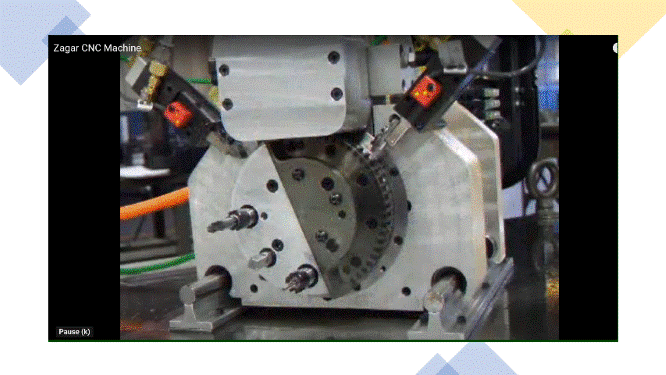The 3 Most Common Manufacturing Processes
Because machining is so versatile and such a common manufacturing process, different materials, such as wood, composites, plastics and metals can be machined using the three main processes. The three most commonly used machining processes are Turning, Drilling and Milling.

- Turning is a form of machining in which unwanted material is removed from the workpiece. The process of turning requires a turning machine or lathe, the workpiece, a cutting tool, and of course, a workholding tool such as a collet. Turning is typically performed on metals, alloy steel, carbon steel, cast iron, stainless steel, aluminum, copper, magnesium, zinc, composites, thermoplastics, wood and more. One of the downsides of this process, is that it wears down the fixtures. Turning can be manual or automatic with CNC (Computer Numerical Control) so you can program all the tooling changes speeds and movements into a computer. When the instructions are received by the lathe, the work can be completed automatically. Zagar has collets that facilitate turning, but does not manufacture lathes.
- Drilling, which creates one or more holes in the workpiece. Drill and tap heads are engineered for a wide variety of hole making needs, in any pattern and any material. Zagar has two broad categories of drills, the original gear driven and the pioneering gearless drills.
Gearless: Imagine a simultaneously drilling holes from 2 to 5,184 spindles! In pioneering the gearless drill head, Zagar created multispindle mass productions drilling and tapping machines with the closest possible spindle centers for greater production, minimum backlash, quick spindle changeover, and simultaneous multiple pitch tapping. Because spindles locations are not restricted to gear train configurations, gearless drilling allows for completely random patterns. Geared: Zagar gear driven multi spindle drill heads reduce cycle time for high volume production using hydraulic, pneumatic and high-production drilling and tapping machines, reamers and other rotating tools. Even the bits of waste created when a hole is drilled in the workpiece, known as the chips, or swarf, are addressed by engineers. The shape of the drill helps chips all away from the workpiece ensuring that it is free of debris, while new manual quill drill units are sealed to ensure waste falls outside the machine. In this way damage to the machine and machine down time can both be reduced. - Milling uses multi-point rotary cutters to dislodge waste material from a workpiece. Milling can cut flat bottomed cavities and flat surfaces into the workpiece placed perpendicular to the cutter axis, called face milling. Or milling can be performed on a parallel workpiece in a process referred to as peripheral milling which cuts threads, deep slots and gear teeth. Milling usually finishes workpieces that have usually already been machined. It adds features like contours, compartments, slots and holes.
In Machining the excess material is removed from a workpiece. In additive manufacturing layers of material are added one layer at a time to the workpiece. Machining is more like sculpting while 3D Printing is more like assembling from building blocks. The versatility of machining, and the new ways it is being automated today will ensure it remains a common manufacturing process for a wide variety of materials. For best machining results, the operations from the beginning to the finishing of your workpieces must be planned in an ordered sequence. Since 1937, Zagar has focused on helping customers plan their manufacturing solutions. Visit https://zagar.com or email sales@zagarinc.com or call us at (216) 731-0500 today for information on how our products can resolve your production challenges.
